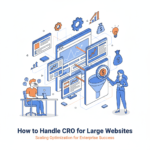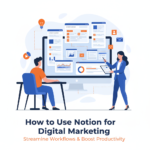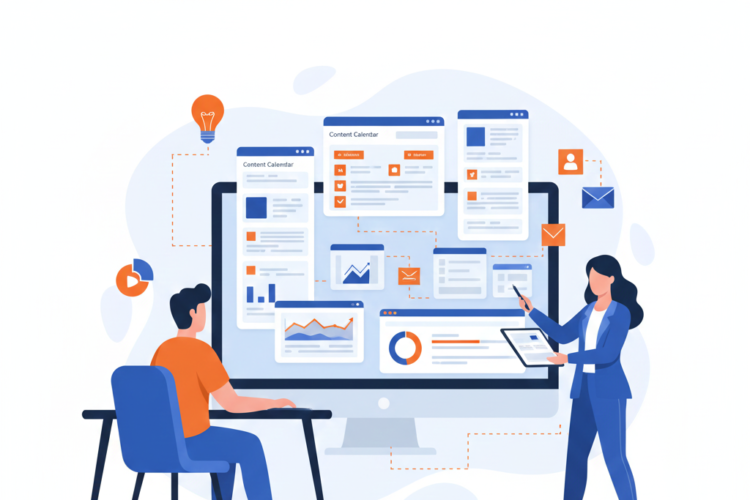
What is A/B Testing?
The Ultimate Guide to Running Successful A/B Tests for Better Decisions in Marketing, Design, and Product Development
📌 Table of Contents
-
Introduction: The Power of Testing
-
What is A/B Testing?
-
Why A/B Testing Matters
-
How A/B Testing Works (Step-by-Step)
-
A/B vs Multivariate vs Split Testing
-
Common A/B Testing Use Cases
-
Key Metrics to Track in A/B Testing
-
Statistical Significance & Confidence
-
Tools & Platforms for A/B Testing
-
A/B Testing in Digital Marketing
-
A/B Testing in UX/UI and Product Design
-
A/B Testing in Email Marketing
-
A/B Testing in Paid Advertising
-
A/B Testing for E-commerce Optimization
-
Creating a Hypothesis for Testing
-
Sample Size and Duration of Tests
-
A/B Testing Mistakes to Avoid
-
A/B Testing Best Practices
-
Real-World A/B Testing Case Studies
-
Future Trends in A/B Testing
-
Final Thoughts + Optimization Framework
1. 🧠 Introduction: The Power of Testing
Every successful marketer, product manager, and UX designer knows one truth: you can’t improve what you don’t test.
In today’s data-driven world, assumptions don’t win — experiments do. And the simplest, most effective form of experimentation? A/B testing.
2. 🔍 What is A/B Testing?
A/B testing, also known as split testing, is a method of comparing two versions of a webpage, email, app feature, ad, or any other content to see which performs better.
-
Version A: the original (control)
-
Version B: a variation (test)
Users are randomly shown one of the two, and performance is measured based on a predefined goal — clicks, conversions, bounce rate, etc.
3. 🎯 Why A/B Testing Matters
| Benefit | Description |
|---|---|
| 📈 Data-driven growth | Make decisions based on real user behavior |
| 🧪 Risk reduction | Test small changes before full rollout |
| 🎯 Goal optimization | Improve conversion rates, engagement, sales |
| 👥 Audience understanding | Learn what your users prefer |
| 💸 Better ROI | Eliminate guesswork and maximize value |
4. 🔄 How A/B Testing Works (Step-by-Step)
-
Identify a goal
Example: Increase clicks on the CTA button. -
Create a hypothesis
Example: “Changing the CTA button color to green will increase clicks.” -
Create variants
-
A: Original (blue button)
-
B: Variation (green button)
-
-
Split traffic randomly
Half of users see A, half see B. -
Collect data
Track clicks, engagement, or any other KPI. -
Analyze results
Use statistical analysis to determine a winner. -
Implement the winner
Roll out the better-performing version permanently.
5. 🔁 A/B vs Multivariate vs Split Testing
| Test Type | Description | Use Case |
|---|---|---|
| A/B Test | Compares 2 versions (1 change) | Button color, headline text |
| Multivariate Test | Tests multiple elements together | Headline + image + CTA |
| Split URL Test | Tests two separate URLs | Entire layout redesigns |
A/B is the most common and simplest to execute.
6. 🛠 Common A/B Testing Use Cases
-
Website copy (headlines, paragraphs)
-
CTA buttons (text, color, placement)
-
Landing pages
-
Email subject lines
-
Pricing pages
-
Product descriptions
-
Mobile app UX flows
-
Ad creatives and copy
-
Checkout processes
-
Pop-ups and forms
7. 📊 Key Metrics to Track in A/B Testing
| Metric | Purpose |
|---|---|
| Conversion Rate | Main performance indicator |
| Click-Through Rate (CTR) | Measures engagement |
| Bounce Rate | Shows content relevancy |
| Average Session Duration | User interest |
| Revenue Per Visitor | Monetization |
| Email Open Rate | Subject line effectiveness |
| Cart Abandonment Rate | Checkout optimization |
8. 🧮 Statistical Significance & Confidence
A/B testing is only meaningful if the results are statistically significant.
-
Statistical significance: Likelihood the result is NOT due to random chance.
-
Confidence level: Most tests aim for 95% confidence.
-
P-value: Lower than 0.05 is generally considered significant.
Use online calculators or platforms like Optimizely, VWO, or Google Optimize to measure significance.
9. 🧰 Tools & Platforms for A/B Testing
| Tool | Best For |
|---|---|
| Google Optimize (sunset in 2023) → alternatives | Beginners |
| Optimizely | Enterprise-level experiments |
| VWO (Visual Website Optimizer) | Website and product testing |
| Adobe Target | Personalization and testing |
| Unbounce | Landing page A/B testing |
| Mailchimp / ActiveCampaign | Email testing |
| Facebook Ads Manager | Ad A/B testing |
| Google Ads | Ad and landing page testing |
| Convert | Advanced testing and personalization |
10. 💡 A/B Testing in Digital Marketing
Test variations of:
-
Landing pages
-
Email campaigns
-
Lead forms
-
Paid ads (images, headlines, CTAs)
-
Social media posts
-
Blog headlines and intros
Small changes can lead to huge performance increases.
11. 📱 A/B Testing in UX/UI and Product Design
Test different:
-
App onboarding flows
-
Feature placements
-
Layouts
-
Color schemes
-
Navigation options
-
Tooltip placement
UX teams use A/B tests to drive product decisions with real user behavior data.
12. 📧 A/B Testing in Email Marketing
Email marketers test:
-
Subject lines
-
Preview text
-
Send times
-
From names
-
Layouts
-
CTA buttons
Example:
Subject A: “Flash Sale: 20% OFF”
Subject B: “You’ve Got 24 Hours Only!”
The subject line with the higher open rate wins.
13. 🎯 A/B Testing in Paid Advertising
Test different ad:
-
Creatives (image vs video)
-
Headlines
-
Body copy
-
CTA buttons
-
Target audiences
-
Platforms and placements
Facebook, Google, LinkedIn, TikTok Ads all support A/B testing.
14. 🛒 A/B Testing for E-commerce Optimization
Optimizing:
-
Product page layouts
-
Add-to-cart buttons
-
Checkout flows
-
Upsell and cross-sell offers
-
Trust signals (badges, reviews)
-
Product image styles
Small tweaks can drive big increases in conversion rate and average order value (AOV).
15. 📐 Creating a Hypothesis for Testing
A good hypothesis = statement + expected outcome + reason
Format:
“If [we change this], then [this will happen], because [reason].”
Example:
“If we use urgency (‘Limited Time Offer’) in the CTA, conversions will increase because users will feel FOMO.”
16. 🧮 Sample Size and Duration of Tests
-
Too few users = unreliable results
-
Too short = no significance
-
Too long = wasted resources
Use online calculators to estimate sample size based on:
-
Baseline conversion rate
-
Expected improvement
-
Confidence level
Minimum test duration: 7 days (to capture day-of-week effects)
17. ⚠️ A/B Testing Mistakes to Avoid
-
Testing too many things at once
-
Stopping tests too early
-
Not tracking the right metric
-
Testing without enough traffic
-
Ignoring statistical significance
-
Running tests during major external changes (seasonality, site relaunch)
-
Failing to document learnings
18. ✅ A/B Testing Best Practices
-
Test one variable at a time
-
Keep everything else constant
-
Ensure proper traffic split
-
Always start with a hypothesis
-
Track primary and secondary KPIs
-
Be patient — wait for significance
-
Share insights across teams
19. 🧪 Real-World A/B Testing Case Studies
✅ Dropbox
Tested homepage layout and saw a 10% increase in signups.
✅ HubSpot
Tested CTA wording and improved click-through by 30%.
✅ Booking.com
Runs over 1,000 simultaneous A/B tests — from button colors to algorithm changes.
✅ Amazon
Tests everything — from product title length to button placements.
20. 🔮 Future Trends in A/B Testing
-
AI-powered testing (suggests winning variants)
-
Real-time adaptive testing (personalized variants)
-
Voice UI testing
-
Multimodal experiments (text + visuals + UX)
-
Predictive A/B testing
-
Autonomous testing agents (agentic AI)
Tools like ChatGPT, Google AI, and Adobe Sensei are already reshaping experimentation.
21. 🧩 Final Thoughts + A/B Optimization Framework
A/B testing isn’t just for tech giants. It’s a mindset — one that replaces opinions with evidence.
Whether you’re optimizing a single CTA or an entire onboarding journey, data-driven testing leads to better results and smarter growth.
🚀 A/B Testing Framework
Step 1: Define the problem
Step 2: Form a clear hypothesis
Step 3: Choose your primary metric
Step 4: Design the variants
Step 5: Set up proper tracking
Step 6: Run the test for statistically valid duration
Step 7: Analyze and document results
Step 8: Implement winner and test again
Author



